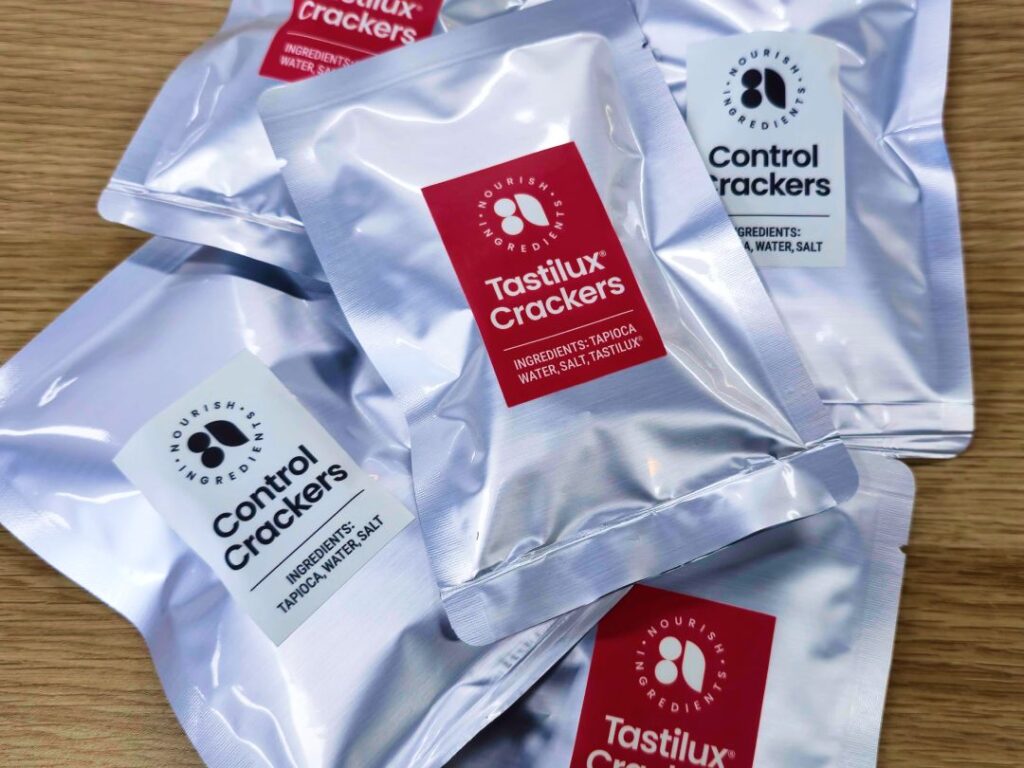ADVERTISEMENT
-B Swaminathan (cbedit@imaws.org)
Maintaining taste without compromise means ensuring that consumers don’t have to sacrifice flavour and enjoyment for sustainability. Plant-based foods have long promised to be better for the planet and our health, but it’s only recently that they have started to truly satisfy our palates. The plant-based food industry has reached a critical turning point. For years, products promised sustainability and health benefits but often fell short on the one thing that matters most to consumers – taste. This is now changing fast, and not by accident.
Ernesto Vecilla, Head of Culinary Innovation, Nourish Ingredients, speaks exclusively to Kitchen Herald on why believe food should be delectable first and foremost, and if it’s also good for the planet, that’s a bonus. The company is working to deliver the fats that make sustainable future foods not just viable, but genuinely delicious. That means the right sizzle, the right aroma, the right juiciness, the right taste.

What are the biggest challenges in replicating the precise taste and texture of specific cuts of meat, like a steak versus ground beef, with plant-based ingredients?
When you’re designing a product from plants to mimic a complex animal tissue, you have to account for multiple factors like appearance, how it browns and pulls, the smell, and its juiciness. One of the biggest challenges lies in replicating the role of fats. Fats are the unsung heroes of flavour, acting as vehicles for aromas and flavour compounds. Many of the deep, complex flavours we love are fat-soluble.Without the right fats, these flavours are not released properly and cannot linger on the palate.
Replicating the precise structure of different cuts of meat is also a major challenge. The way the fibres pull, the release of juices during chewing, and the resistance to biting are crucial for the sense of deliciousness. Plant-based ingredients often lack the foundational building blocks, such as the specific fat molecules, to achieve this.
Thanks to breakthroughs across disciplines, companies producing meat analogues or hybrid products are developing better solutions, combining technologies that were not available just years ago. The final sensory perception from a customer may come from a combination of the fibrous texture, the colour, the looks, and the aftertaste, among many others.
There is a variety ofraw materials to begin with, and a series of processes that can be applied to them, yielding totally different textures.It is the combination of the right plant materials, the right processing method, and the right flavours and other ingredients that creates each unique end product. Balancing this while keeping the label short and recognisable is a great challenge.
We are bringing to the market innovations focused on creating the authentic flavour experience customers love and crave, that can be applied across different cuts of meat.

How do you overcome the “off-notes” or bitterness often associated with plant-based proteins, and what role do flavor enhancers and masking agents play in this process?
Flavour perception is complex and involves many senses, particularly taste and aroma. Alternative protein products made from plants naturally retain some of the flavours of the plants they are made from. During processing, some undesirable flavours may become more prominent, as they may become more concentrated than in the raw material, such as soy or pea..
Sometimes, masking is achieved through purification of the plant sources to obtain a cleaner taste profile. When unpleasant notes persist, flavour masking using encapsulation or other ingredients, such as bitterness blockers, is employed. The balance of flavours substantially influences our perception of food products. Similar to how a symphony works, all basic tastes and aromas interact simultaneously to create an overall sensation. Product developers and scientists have found that tweaking one element can change the perception of another; for example, sweetness can mask bitterness, saltiness can enhance sweetness, and acidity can influence perceived freshness.
This has been achieved with various degrees of success using different ingredients from flavour companies.However, one of the most interesting things that we found out with our technology is that, in addition to delivering authentic meaty taste, it effectively rebalances the flavour and dials down plant-like off-notes. This is great for product developers, because they can minimize their ingredient list, displace flavours and maskers, and reduce fats, all with one natural ingredient.
I foresee that this won’t be the only advancement in the coming years, but it stands out as a clear example of the trends that we see from a development perspective: consumers want simpler labels without renouncing taste and functionality.
Can you explain the science behind achieving a realistic mouthfeel and juiciness in plant-based products, and how do you replicate the fat content and “marbling” of traditional meat?
As a chef, I have always been aware of the importance of fats in the overall experience of food. Fats are a key element in a wide range of ingredients and preparations that we instinctively find delicious. From the creaminess of ice cream to the caramelisation of a marbled steak, or the richness of chocolate and cheese, different fat molecules are fundamental to creating that enjoyable experience we love and crave.

The technology behind our innovative ingredients focuses on the specific molecules within fats that have the greatest impact on both taste and functionality. This allows food manufacturers to finally bridge the gap between plant-based and animal-based products, not only in terms of nutrition but also in delivering the full sensory experience consumers crave.
For example, our ingredient Tastilux® contains some of the specific fat molecules found across different animal meat products in very small amounts, which just happen to be present in fungi too. Harnessing the power of precision fermentation, we can produce this ingredient, which can seamlessly be implemented in food manufacturing. Adding this specific ingredient in a plant-based meat formulation allows us to replicate the authentic experience of a meat product.
How do you ensure that the cooking process for your products—such as grilling or searing—yields the same browning and savory aroma as animal protein?
To get as close as possible or even outperform mass-produced animal products, many elements need to be at play. There is the visual aspect of food, the texture, mouthfeel, and most importantly, taste and aroma.
With time and temperature, a piece of protein goes through the Maillard reaction, reacting naturally and generating the aroma and flavour compounds that make meat, meat. Think about a chicken breast that is caramelized on a hot pan. It turns from somewhat plain to a fragrant and succulent piece of meat, with complex aromas and savory notes.
Studying what molecules are present in a piece of animal protein, how those behave when grilling it, and how the Maillard reaction works is fundamental to understanding what makes meat so craveable. What makes Tastilux® stand out is that we found a source of the authentic animal fat molecules that plants don’t produce and are fundamental for the different flavours and aromas to develop when cooking meat, and we obtain them from natural fermentation. We mimic what nature does, which allows our technology to unlock a unique, delicious, meaty experience, completely animal-free.
Combining ingredients produced via precision fermentation with other existing solutions is the most efficient way to go. Nourish Ingredients’ approach is unique. We harness the power of fermentation, focusing on the specific fat molecules that make animal products taste and perform the way they do, and producing natural, simple ingredients that seamlessly integrate with new product development processes for our customers.
Smart science can help us bridge some of the challenges in our food system with a fraction of the resources.
What innovations in flavor technology are you most excited about right now that are helping to close the taste gap between plant-based and conventional meat?
Apart from what we do at Nourish Ingredients with our flagship product Tastilux®, I am really excited by other technologies.
When speaking about flavour, consumers don’t directly think about the texture of foods, but in my opinion, texture has a very strong influence on our perception. You can get a really authentic beefy profile, but if the texture is mushy and doesn’t deliver the expected eating experience, the magic is gone, and a frequent consumer won’t repeat.
I think that high-moisture extrusion and spinning protein technology are extremely interesting and have provided a significant improvement in the texture of meat analogues. Combined with the right flavor elements and fats, these technologies are helping to createbetter products. Creating ham or a sausage with that realistic texture and snap, or a realistic fibrous chicken breast was impossible just a few years ago– but thanks to these technologies around texture, we are seeing improvements happening quickly.
Industrial, mass-produced animal proteins are not improving. If anything, their quality is decreasing to meet the huge demand driven by population growth and rising incomes worldwide.
Alternative proteins are improving and becoming more affordable. Once the cost and quality reach a competitive level, the market will tilt toward alternatives.
This is not just a question of animal rights or sustainability; it is primarily a matter of efficiency. Our planet’s resources are limited, and animal farming requires far more land, water, and energy than producing plant-based alternatives that directly meet our protein needs. While many consumers currently choose animal products for flavor, alternative proteins are rapidly improving, closing the gap in taste and texture and making the transition increasingly feasible.
Looking ahead, do you believe plant-based products can one day be entirely indistinguishable from their meat counterparts in terms of taste, or will there always be a subtle difference?
We are at a critical point in the food system. With global protein demand expected to double by 2025, mass-produced animal products are not increasing in quality. On the other hand, alternative proteins are catching up quickly, thanks to solutions like ours. Being able to tick all the right boxes, from taste and cost to environmental impact, is allowing the food system to change for the better.
The conversation isn’t about choosing one or the other. Instead of a false dichotomy between traditional agriculture and alternative proteins, the most practical and often overlooked solution is hybrid products. Hybrid foods represent a genuine innovation pathway that could transform our food systems while addressing the very real challenges of climate change and resource scarcity.
Can we make food delicious and sustainable at the same time? That’s a huge problem to solve, and many companies around the world are working on small aspects of it simultaneously through various approaches. At Nourish Ingredients, we utilise our proprietary ingredients to deliver the taste and performance required for these foods to succeed.







